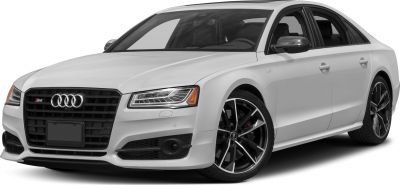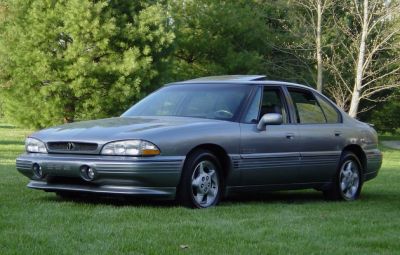 1993 Eagle Vision Dimensions, Size & Specs
1993 Eagle Vision Dimensions, Size & SpecsMeasurements of the 1993 Eagle Vision, engineered for optimal performance and comfort
| Dimensions | |
|---|---|
| Length: | 5120 mm201.6 in16.8 ft |
| Width: | 1890 mm74.4 in6.2 ft |
| Height: | 1417 mm55.8 in4.6 ft |
| Trunk Capacity: | 473 liter16.7 cu ft |
| Weight Specifications | |
| Curb Weight: | 1518-1582 kg3347-3488 lbs |
| Tire Specifications | |
| Tire Sizes: |
|
The Eagle Vision sedan, produced from 1992 to 1998 and marketed under the 1993 model year, represents a distinguished mid-size vehicle known for its spacious dimensions and balanced performance. This generation offers a substantial length of 5120 mm (201.6 inches), providing ample interior space and road presence. With a width of 1890 mm (74.4 inches), the Vision boasts a wide stance that enhances stability and contributes to comfortable seating for occupants. Its height measures 1417 mm (55.8 inches), lending a sleek yet practical profile typical of sedans from the early 1990s. Weighing between 1518 and 1582 kg (3347 to 3488 lbs), the Eagle Vision achieves a well-balanced curb weight that aids in its driving dynamics without compromising fuel efficiency. The luggage capacity is notably generous at 473 liters (16.7 cubic feet), accommodating the storage needs of daily commutes and longer trips. Tire options for this model include sizes 205/70 R15 S and 225/60 R16 V, supporting both comfort and performance driving styles. Overall, the Eagle Vision sedan's dimensions make it a competitive choice in the mid-size sedan segment, blending functional space with refined design to meet the needs of drivers seeking a reliable and spacious vehicle from the 1990s era.
Discover the standout features that make the 1993 Eagle Vision a leader in its class
Have a question? Please check our knowledgebase first.
The Eagle Vision, produced from 1992 to 1998, measures 5120 mm (201.6 inches) in length, 1890 mm (74.4 inches) in width, and has a height of 1417 mm (55.8 inches). These dimensions place it firmly in the full-size sedan category, offering a spacious interior and road presence typical for sedans of this era.
The curb weight of the Eagle Vision ranges between 1518 kg to 1582 kg (3,347 to 3,488 pounds) depending on the model variant and optional equipment. This weight balance contributes to the car's stability and smooth driving experience, making it neither too heavy nor too light for a full-size sedan of its time.
The Eagle Vision offers a trunk space of 473 liters (approximately 16.7 cubic feet), which is quite generous for a sedan. This ample luggage capacity allows for practical everyday use, accommodating multiple suitcases, groceries, or sports equipment comfortably, making it suitable for family trips or daily errands.
The Eagle Vision came equipped with tire sizes of either 205/70 R15 S or 225/60 R16 V. The 205/70 R15 tires provide a good balance between comfort and grip with a slightly taller sidewall, while the 225/60 R16 tires enhance handling and road grip due to their wider tread and lower profile, contributing to a sportier ride quality.
With a length of 5120 mm (201.6 inches) and a width of 1890 mm (74.4 inches), the Eagle Vision is comparable in size to many full-size sedans and should fit comfortably into a standard residential garage, which typically accommodates vehicles up to about 6 meters (19.7 feet) in length. However, owners should ensure their garage width allows for easy door opening and maneuvering given the car’s width.
The Eagle Vision was introduced as a modern replacement in the early 1990s, offering a sleeker and more aerodynamic design than its predecessors. Compared to older models from related Chrysler and Eagle lines, the Vision is longer and wider, providing enhanced interior space and road stability. Its 5120 mm length (201.6 inches) and 1890 mm width (74.4 inches) make it larger than many mid-size predecessors, reflecting a trend towards more spacious and comfortable sedans during that period.
When compared to similar full-size sedans from the 1990s, such as the Chevrolet Lumina or Ford Taurus, the Eagle Vision tends to be longer and wider, especially with its length of 5120 mm (201.6 inches) and width of 1890 mm (74.4 inches). This gives it an edge in cabin and cargo space. Additionally, the Vision’s tire options and relatively moderate curb weight contribute to a balance of comfort and performance that competes well with its contemporaries.
Standing at 1417 mm (55.8 inches) tall and 1890 mm (74.4 inches) wide, the Eagle Vision offers ample headroom and shoulder space for occupants, enhancing comfort during longer trips. The relatively wide stance contributes to better stability and a spacious cabin feel, important aspects in full-size sedans for accommodating family and passengers comfortably.
The Eagle Vision's curb weight, ranging from 1518 to 1582 kg (3,347 to 3,488 pounds), strikes a balance that impacts both fuel efficiency and driving dynamics. While the weight is typical for a full-size sedan of its era, it does mean fuel consumption may be higher compared to smaller or lighter vehicles. However, this weight provides stability for smooth handling and a comfortable ride, making it well-suited for highway cruising and daily driving.
The Eagle Vision was noted for its forward-thinking design and engineering under Chrysler's LA platform in the 1990s. Its aerodynamic sheet-metal styling was a departure from boxier predecessors, helping improve fuel efficiency and aesthetics. The Vision featured unibody construction, advanced suspension setups for better ride and handling, and a spacious interior with competitive cargo volume. These attributes combined to deliver a sedan that balanced comfort, practicality, and contemporary style for its time.
Discover similar sized cars.

| Production: | 1991-1999 |
|---|---|
| Model Year: | 1992 |
| Length: | 5090 mm200.4 in |
| Width: | 1880 mm74.0 in |
| Height: | 1415 mm55.7 in |

| Production: | 2013-2018 |
|---|---|
| Model Year: | 2013 |
| Length: | 5147 mm202.6 in |
| Width: | 2111 mm83.1 in |
| Height: | 1458 mm57.4 in |

| Production: | 2012-2013 |
|---|---|
| Model Year: | 2012 |
| Length: | 5146 mm202.6 in |
| Width: | 2111 mm83.1 in |
| Height: | 1458 mm57.4 in |

| Production: | 2017-2021 |
|---|---|
| Model Year: | 2018 |
| Length: | 5172 mm203.6 in |
| Width: | 2130 mm83.9 in |
| Height: | 1473 mm58.0 in |

| Production: | 2013-2017 |
|---|---|
| Model Year: | 2014 |
| Length: | 5137 mm202.2 in |
| Width: | 2111 mm83.1 in |
| Height: | 1460 mm57.5 in |

| Production: | 2010-2013 |
|---|---|
| Model Year: | 2011 |
| Length: | 5137 mm202.2 in |
| Width: | 2111 mm83.1 in |
| Height: | 1460 mm57.5 in |

| Production: | 1991-1999 |
|---|---|
| Model Year: | 1992 |
| Length: | 5066-5107 mm199.4-201.1 in |
| Width: | 1892 mm74.5 in |
| Height: | 1416 mm55.7 in |
| Model Year: | 2008 |
|---|---|
| Length: | 5097 mm200.7 in |
| Width: | 1885 mm74.2 in |
| Height: | 1423 mm56.0 in |
